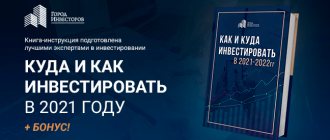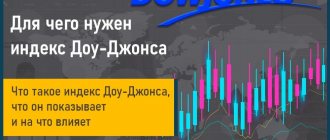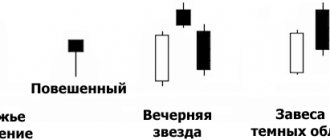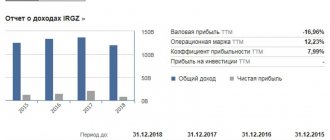Guru's portfolio: five stocks that the legendary George Soros believes in
MOSCOW, April 18 — PRIME. Soros's fund had made tens of billions of dollars for clients since the 1970s, but then closed its doors to outside investors. What stocks does the stock market legend bet on? RBC answers this question.
GEORGE SOROS: FROM BELLER AND WAITER TO STOCK MARKET LEGEND
Famous trader, investor and financier George Soros was born in Hungary in 1930, where he experienced the Nazi occupation and the Holocaust. After World War II he left Budapest for London. There he worked as a railway porter and a nightclub waiter to pay for his studies at the London School of Economics.
In 1956, he emigrated to the United States, where 13 years later he launched the Quantum Fund. Soros owes most of his fortune to this foundation. Quantum was involved in trading currencies, securities and commodities.
George even received the nickname “the man who bankrupted the Bank of England,” as he used speculation to collapse the British pound in 1992. As a result, Soros' fund earned about $7 billion. From 1969 to 1980, Quantum's returns soared 3,365%, while the S&P 500 rose 47%.
Just like a number of others, this fund is part of Soros Fund Management, which in 2011 turned from a hedge fund into a “family office.” It has closed its doors to outside investors, but has generated $43.9 billion for clients since its inception.
By the end of the fourth quarter of 2021, Soros' fund's assets were valued at nearly $5.2 billion, according to Refinitiv data. If by April 12 the composition of the portfolio had not changed, but they had risen in price by almost $322.9 million. According to Whalewisdom, the fund sold shares of more than 40 companies. Among the largest sales were shares of DraftKings, Hain Celestial Group, VICI Properties and others.
Analysts said whether it is worth investing in shares of Russian developers
FIVE SHARES THAT A GREAT INVESTOR BET ON
- Liberty Broadband
Shares in the portfolio - almost 5.3 million
In first place in the Soros fund's stock portfolio are securities of the telecommunications corporation Liberty Broadband. One of its main assets is a stake in Charter Communications, which provides cable and digital television services, mobile communications, has its own TV channels and video services, and also acts as an Internet provider. Liberty Broadband's subsidiary, GCI Holding, is the largest communications service provider in Alaska.
The Soros Foundation has been investing in Liberty Broadband since 2021. Over the course of 2020, the company's shares grew by 25.94%, but since the beginning of this year they have decreased in price by 5.63%. If the composition of the fund’s portfolio has not changed, then the package of Liberty Broadband securities has fallen in price by 47.1 million over the past three and a half months
- Palantir Technologies
Shares in the portfolio - almost 18.5 million
The company's founders are members of the so-called "PayPal mafia", namely Peter Thiel and his former colleagues - Joe Lonsdale, Alex Karp, Nathan Gettings and Steven Cohen. They launched Palantir in 2003. The company develops software for data analysis and protection.
It cooperates with US intelligence: Palantir analysts can learn about impending crimes from data from video cameras, photos and messages on social networks, as well as phone calls. The company helped the government find “number one terrorist” Osama Bin Laden.
For commercial clients, Palantir studies global data flows—for example, United Airlines uses its technology to optimize flight routes.
Palantir has reported losses for 17 years. Last September, the company listed on the New York Stock Exchange. On its first day of trading, Palantir shares closed at $9.50. By the close of April 12, the company's securities cost $23.34, that is, they increased by 145.68%. If the number of company securities in the Soros fund’s portfolio has not changed, then since the end of September his stake in Palantir has risen in price by almost $255.5 million. However, since the beginning of this year, the company's share price has decreased slightly - by 0.89%.
Bank Of America named the main reason for investing in Bitcoin
- Invesco QQQ Trust Series 1
Shares in the portfolio - almost 11.3 million
The structure of the exchange-traded fund follows the NASDAQ-100 index, which includes the hundred largest companies traded on the NASDAQ exchange. Among the companies whose securities are included in the index are Apple, Activizion Blizzard, Tesla, Baidu, Netflix, Moderna, and so on.
According to Whalewisdom, Soros' fund began investing in Invesco QQQ Trust Series 1 not so long ago - in the third quarter of 2021. Over the past year, shares of the exchange-traded fund have gained 47.57%, and since the beginning of this year they have gained another 7.31%.
Thus, over the past three and a half months, the package of Invesco QQQ Trust securities in the Soros Fund Management portfolio has risen in price by almost $25.9 million, assuming that the composition of the portfolio has not changed.
- D. R. Horton
Shares in the portfolio - over 3.7 million
DR Horton is the largest construction company in the United States. Donald Horton founded it in 1978, and at the same time laid the foundation for the company's first home in Texas. Since then, DR Horton has sold over 810,000 homes to clients. It operates in 29 states.
In addition, its subsidiaries issue mortgages and provide insurance services. In addition, they build houses in different price categories - from budget to expensive and luxury. In 2021, DR Horton ranked No. 194 on the Fortune 500 list of the largest U.S. corporations by revenue. A year later, she moved to 183rd place.
However, the coronavirus pandemic has impacted the company's business as it has reduced economic activity in the United States. However, in the first quarter of fiscal 2021, DR Horton's net income rose 84% compared to the first quarter of last year, to $791.8 million.
The company's shares are up 30.65% so far in 2021, and another 36.03% so far this year. During the fourth quarter, the Soros fund bought almost 650 thousand securities of the builder. If the fund's composition has not changed, its stake in DR Horton shares has risen by almost $92 million over the past three and a half months.
- iShares iBoxx $ Investment Grade Corporate Bond ETF
Shares in the portfolio - almost 1.6 million
The fund was launched by the investment company BlackRock in 2002. It consists of corporate bonds. The ETF includes securities of more than 2 thousand companies and banks. Among the largest assets are securities of Bank of America, JPMorgan Chase, Verizon Communications, Comcast and others. As of April 15, the fund's net assets were nearly $41.9 billion.
During the fourth quarter, the Soros fund bought 245 thousand ETF securities. iShares shares have gained 7.95% so far in 2020, but are down 5.34% so far this year. The portfolio of ETF shares in the Soros Fund Management portfolio has dropped by almost $11.7 million, if its composition has not changed over the past three and a half months.
Bill Gates listed the fatal mistakes of the US and Europe at the beginning of the pandemic
HOW MUCH COULD YOU EARN ON THE TOP 5 SHARES
If an investor invested 100 thousand rubles in the five main shares of the Soros fund, he would earn 412.2 thousand rubles. Over the course of a year, DR Horton’s papers would have brought him 139.7 thousand rubles, and investments in Invesco QQQ Trust Series 1 would have brought him almost 75.3 thousand rubles.
He would have earned almost 34.8 thousand rubles on Liberty Broadband shares, and 5.7 thousand rubles on the securities of the iShares bond fund. But the most an investor could gain by investing in Palantir shares when they began trading on the exchange in late September. They would have brought him almost 156.7 thousand rubles.
Calculations were carried out taking into account the difference in exchange rates and dividends paid. They are paid by Invesco and iShares funds, as well as by DR Horton.
The Russian stock market moved to growth during the day following oil
MOSCOW, May 21 — PRIME. The Russian stock market on Friday afternoon moved to moderate growth in the main stock indices following global markets and oil, as follows from trading data.
By 15.35 Moscow time, the Moscow Exchange ruble index rises by 0.67%, to 3660.58 points, the RTS index - by 0.8%, to 1571.25 points.
The dollar exchange rate in “tomorrow” calculations decreased by 14 kopecks, to 73.39 rubles, the euro exchange rate - by 41 kopecks, to 89.5 rubles.
June Brent crude futures are up 1.31% to $65.96 per barrel.
The ruble is strengthening due to oil
GROWTH BY RISK
“At the start of the session, we made an attempt to go up against an ambiguous external background, but then it worsened, causing us to draw down,” notes Dmitry Babin from BCS World of Investments. On Friday, oil tried to develop its recovery, but after the opening it updated its monthly minimum, the expert adds.
Global markets were supported by stronger-than-expected data on business activity indices in the EU manufacturing and services sectors, explains Babin.
“Following a short-term decline, global exchanges and oil prices rushed up, returning our indices to their daily highs,” the expert continues.
An additional positive is the stabilization of the situation on the US debt market, which has shown a decrease in government bond yields, adds Babin. This has reduced fears of a surge in inflation that would threaten the Fed's ultra-loose monetary policy, he concludes.
On Friday, the Russian stock market showed moderately positive dynamics against the backdrop of a favorable situation on external stock exchanges, as well as due to an increase in global risk appetite, says Natalia Pyryeva from Finam Group of Companies.
“Today, global stock markets are showing mixed dynamics, but there is a partial continuation of yesterday’s momentum. Europe is moving upward, Asia is moving in different directions,” says Anna Pilgunova from Freedom Finance.
Gazprom and Rusgazdobycha began construction of a new gas complex
LEADERS OF GROWTH AND FALL
The leaders of Friday's growth were preferred shares of Bank St. Petersburg (+9.94%), Mechel (+4.81%) and Quadra (+3.95%), ordinary shares of Rusal (+3 .81%), M.Video (+2.67%), Magnit (+2.5%), Gazprom Neft (+2.13%), Aeroflot (+1.74% ), Sberbank (+1.69%), as well as receipts of TCS Group, which includes Tinkoff Bank (+1.88%), X5 Retail Group (+1.79%) and Mail.ru (+1. 54%).
By mid-day, shares of UWC (−3.97%), Uralsib (−2.45%), Kuibyshevazot preferred shares (−1.91%), ordinary shares of WTC (−1.81%), VTB fell noticeably in price (−1.24%), ChMK (−1.64%), Rusagro receipts (−1.12%).
FORECASTS
If world markets continue to grow, the main Russian indices may gain a foothold above the nearest resistance levels: the Moscow Exchange index is at 3658 points, the RTS index is at 1565 points, Dmitry Babin from BCS World of Investments assesses the prospects. True, our growth may be restrained by the Friday factor, when many market participants refrain from activity or reduce investments in shares for fear of any risks materializing over the weekend,” the expert suggests.
The Moscow Exchange index continues its upward movement, but in the coming days the growth potential of the index is limited, says Natalia Pyryeva from Finam Group of Companies.
The dynamics of the Russian stock market on Friday will be subdued, predicts John Walsh from Alfa Bank.
“Investors are starting to price in the Fed's tapering of stimulus later this year, which has eased upward pressure on US Treasury yields. The pullback in prices on commodity markets also contributes to improving mood,” explains the expert. He expects mixed dynamics on the Russian stock market on Friday; however, according to Walsh, the sideways trend will prevail as the trading week ends.
Investors sensed something was wrong. What's happening in the US stock market
MOSCOW, February 26 – PRIME, Ulyana Krainaya. The pullback on foreign stock exchanges in recent days should not be regarded as a collapse - it is rather a correction that can remove the existing overbought situation. But it would also be wrong to underestimate what is happening. The main reason for the current fall in stocks is the rise in yields on US Treasury securities against the backdrop of the policies of global central banks.
The head of SpaceX and Tesla, Elon Musk, lost almost $14 billion in one day.
The stock market has been wobbling throughout the past week as investors try to make sense of the sharp rise in bond yields. US stock exchanges fell sharply the day before. Thus, the DJIA industrial index fell by 1.76%, to 31,400.50 points, the broad market index S&P 500 by 2.45%, to 3,829.25 points, and the high-tech NASDAQ collapsed by 3.52%. Exchanges are down on inflation fears and statistics. Thus, in the fourth quarter, US GDP grew by 4.1% annualized. The figure was higher than the first growth estimate of 4%, but worse than the analysts' forecast of 4.2% in annual terms.
The Russian stock market also came under pressure from declining foreign exchanges. On Friday, at the beginning of trading, it decreased by 2-2.7% due to external negativity, and analysts expect the week to close in the negative zone.
RECALL IS NOT A COLLAPSE
The recent pullback from record highs does not yet qualify for a collapse, despite the fact that the correction may well intensify, argues BCS World of Investments expert Albert Koroev.
“According to a number of indicators, the markets are indeed overheated, primarily by the environment of low rates. “Inflation, rising prices for commodity assets, and the need for new loans to finance a potential expansion of economic stimulus in the United States are triggering a rise in yields in debt markets,” he points out.
Yesterday, the yield on 10-year Treasuries rose to 1.6%, exceeding the average dividend yield on the S&P 500, which puts direct pressure on the stock market. However, Fed representatives are still talking about their readiness to maintain rates at a minimum level.
Catch up with America. Why did Russia get into trillions of dollars of debt?
The main reason for the current fall in stocks is the increase in yields on US treasury securities, continues Freedom Finance analyst Valery Emelyanov. It is an indicator of what average inflation the market expects for the coming years.
Against the backdrop of the pandemic year 2021, the rate on 10-year bonds fluctuated in the range of 0.6-1% per annum: investors entered these securities in a wide front, which caused an increase in prices for protective assets and, as a result, gave them negligible returns.
Since January, the situation began to change: at first, the rate on 10-year US bonds firmly established itself above 1%, and during February its growth occurs almost non-stop. This week a new psychological level for the market was set - 1.5%. It is important because current inflation in the United States over the past 12 months is 1.4%, and it has remained at this level for more than a quarter.
“That is, for the first time since the beginning of the epidemic, Treasury securities began to generate positive returns. This indicates a strong reverse outflow from American bonds and that now inflation will begin to grow along with the economy - fortunately, all the conditions for this were created by the Federal Reserve and the US Treasury,” the analyst notes.
“For investors, this means the following: the easing cycle may end earlier than everyone thought - not in 1.5-2 years, but already this year. And this is negative for the stock market, because it was largely fueled by cash injections from the US regulator,” adds Emelyanov.
GROWTH IS AROUND
Now we are seeing the strongest fall in shares in several weeks, especially in the segment of IT companies, which have been growing at an accelerated pace in recent months. The Nasdaq Composite lost almost 4% yesterday for the first time in 4 months.
However, if we look at the depth of the drawdown from the latest highs, then the current decline in the indices is not even close to what we saw at the end of January. The Nasdaq Composite is 7% off its recent peaks, the S&P 500 is down less than 3%. This falls within the framework of the usual medium-term correction.
The large-scale energy crisis in the United States is gaining momentum
“On the other hand, the yield on 10-year securities remains significantly below this year’s forecast inflation (up to 2.5% per annum), which means that it has room to grow – and the stock market has room to fall. In the base scenario, we can assume that the correction will last a few more sessions, but next week the market will resume its growth,” suggests Emelyanov.
THE STATISTICS ARE ENCOURAGING
The fall of the markets is more like a correction, which can remove the existing overbought situation, believes Dmitry Alexandrov, Deputy General Director of Univer Capital Investment Company.
Markets are falling, debt yields are rising, but this is happening against the backdrop of good statistics for the United States (orders for durable goods, GDP estimates, claims for benefits).
“All this rather points to economic recovery, so the Fed may seriously tighten its rhetoric at the end of the year. The increase in bond yields in such a situation is understandable, and the correction of markets, especially high-tech, is due to the sensitivity of stocks to rates,” the analyst comments.
In addition, many companies may be forced in such conditions to reduce buyback programs through loans or reduce dividends, reducing their debt load and directing funds to development.
DANGEROUS TREND
The main problem for the global financial market now is the ultra-loose monetary policy of the main central banks, explains QBF leading analyst Oleg Bogdanov.
“They are not responding to rising inflation and are continuing with monetary stimulus, which is making the situation even worse,” he says.
As a result, sales began in the bond markets, prices fell, and yields rose from the beginning of the year.
For some time, investors tried not to notice this dangerous trend, but in recent days the collapse of bonds has intensified, the yield on American ten-year Treasury bonds exceeded 1.5%, which is higher than the average dividend yield on the S&P 500 index. Funds began to revaluate shares, mathematical models began to work for the sale of shares.
According to the analyst, the negative situation on the bond market is developing very dynamically. Some central banks, the Central Bank of Australia, are trying to fix the yield curve, but this is fraught with a fall in the national currency and a further increase in inflation.
Waiting for the collapse. Why Russia supports the US economy
“The global financial market found itself in approximately this situation by the end of the 60s of the last century. Then the US had a bear market for fifteen years. Investors are just entering this unpleasant phase,” the expert comes to this conclusion.










